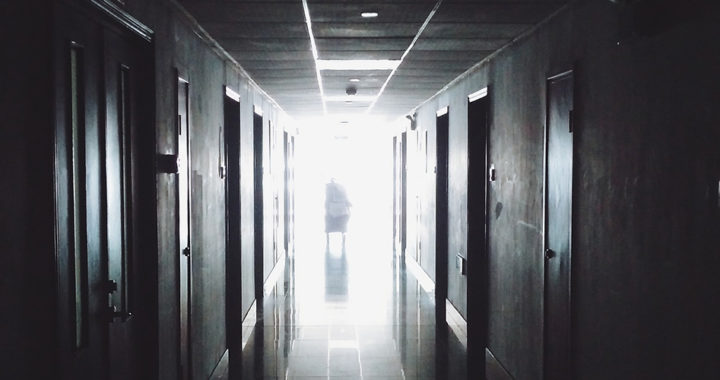Hospital-acquired infections or HAIs are specific infections acquired in a hospital or other health care settings such as outpatient clinics, nursing homes, and rehabilitation centers, among others. Also known as nosocomial infections and healthcare-associated infections, HAIs demonstrate cross-infection and cross-contamination, thus adding to the health and economic burdens of patients, their families, as well as health care workers and the overall community.
The Causes and Risk Factors of Hospital-Acquired Infections
It was during the 1950s and early 1960s when researchers began investigating the nature of hospital-acquired infections. A notable portion of the entire body of literature noted that there are three significant causes or risk factors of HAIs centered on inadequate health care practices. The specific causes are failure to maintain a sterile condition within the healthcare environment, misuse and abuse of antimicrobial agents such as antibiotics, and improper care toward vulnerable patients.
1. Failure to Promote and Maintain Sterile Condition
Several relevant studies have regarded hospitals and other health care facilities as a dangerous place. The separate articles from K. Inweregbu, J. Dave, and A. Pittard, and M. Mohammed et al. mentioned that poor practices in maintaining sterility or cleanliness in health care facilities could result in healthcare-associated infections.
These practices include poor personal hygiene on the part of health care workers who can serve as vectors for transmitting disease-causing microbes between patients and other individuals within the facility, and improper methods used for sterilizing hospital equipment and instrument. Reveals noted that these practices are often prevalent in large and underfunded hospitals that accommodate a large number of individuals that carry different infectious disease.
Researchers F. Kouchak and M. Askarian noted that intensive care units or ICUs are the most probable site for transmitting infectious agents. Most HAI incidents are usually traced back from ICU admission because procedures conducted in this facility often requiring the use of invasive instruments such as mechanical ventilation, feeding tubes, intravenous needles, and catheters, among others.
2. Unreasonable Administration of Antimicrobial Drugs
The misuse and abuse of antimicrobial drugs in a health care setting not only promote antimicrobial resistance, such as the emergence of antibiotic-resistance bacteria but also leads to a prevalent transmission of infectious diseases within the same facility.
In his study that explored the control of infection in several hospitals in China, Wenlong He explained the link between antimicrobial resistance and hospital-acquired infections. To be specific, he said that improper administration of antimicrobial drugs promotes the recurrence of infections that are harder to treat using conventional medications.
Nevertheless, researchers K. Inweregbu, J. Dave, and A. Pittard mentioned that cases of HAIs in intensive unit facilities often include specific cases of antimicrobial-resistant infections, particularly bacterial infections resistant to several types of antibiotics. Preventing the spread of drug-resistant infections within health care facilities requires comprehensive knowledge about the mode of action of each medication, patient history, and pathogenic profiles.
3. Improper Care Toward Vulnerable Patients
The health status of individual patients is also a risk factor for hospital-acquired infections. As an example, Inweregbu, Dave, and Pittard explained that a weak or compromised immune system due to alcoholism, heavy smoking, chronic lung disease, and diabetes are the common health status that increase the susceptibility of individuals toward HAIs.
W. He also noted that infants and elderly patients are also vulnerable to HAIs as evident from the demographical profile of HAI incidents. Infants have immature immune systems that make them prone to acquiring infectious diseases. Senior patients, apart from their comparatively low immune function, often have a severe medical condition or several basic diseases that make them vulnerable to acquiring infections while in health care facilities
In consideration of patient vulnerability toward HAIs, researchers and health organizations have recommended that special attention should be directed toward specific types of patients them as part of risk management. Take note that other researchers have also asserted that health care workers often disregard the health profile of individual patients and neglect addressing the need for preventing hospital-acquired infections.
FURTHER READINGS AND REFERENCES
- He, W. 2016. “Status and Progress in the Control of Infection in Chinese Hospitals.” Infection Journal. 5(4): 105-109. DOI: 10.1515/ii-2017-0139
- Inweregbu, K., Dave, J., and Pittard, A. 2005. “Nosocomial Infections.” British Journal of Anesthesia Education. 5(1): 14-17. DOI: 10.1093/bjaceaccp/mki006
- Kouchak, F. and Askarian, M. 2012. “Nosocomial Infections: The Definition Criteria.” Iranian Journal of Medical Sciences. 37(2): 72-73. PMID: 23115435
- Mohammed, M., Mohammed, A. H., Mirza, M. A. B., and Ghori, A. 2014. “Nosocomial Infection: An Overview.” International Research Journal of Pharmacy. 5(1): 7-12. DOI: 10.7897/2230-8407.050102
